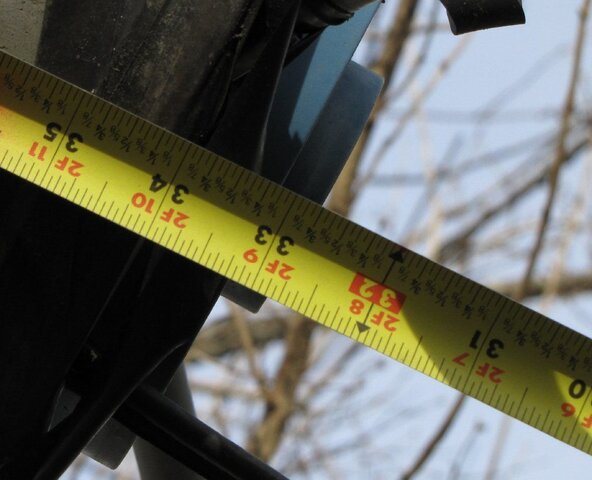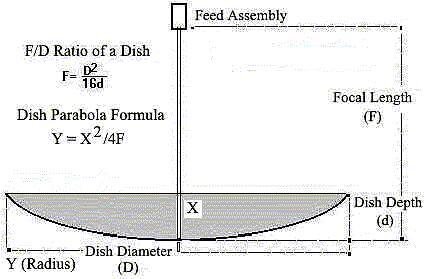After searching and reading different things here on satelliteguys, i decided to go down to the basement and measure my dish. It is currently in halves, so it is real easy for me to measure.
The diameter of my dish is 91 inches. The depth is 14 inches. I found and used a focal length forumula in this forum. I cam up with a focal length of 36.97 inches. Well, okay....Fine....
A co worker had this dish and gave it to me. I took some pics when i went to look at it the first time. I got a picture measuring the distance from the center of the dish to the feedhorn. It measured 32.750. I looked at the feedhorn and checked what the scaler was set on. It is set to 38.
The owner said they never had any issues and that they really liked having cband.
How can these measurement be different?
There is no way i can get 4 more inches from those struts. Surely i measure wrong, calculated wrong or something........
Can someone set me straight?
Pic attached
The diameter of my dish is 91 inches. The depth is 14 inches. I found and used a focal length forumula in this forum. I cam up with a focal length of 36.97 inches. Well, okay....Fine....
A co worker had this dish and gave it to me. I took some pics when i went to look at it the first time. I got a picture measuring the distance from the center of the dish to the feedhorn. It measured 32.750. I looked at the feedhorn and checked what the scaler was set on. It is set to 38.
The owner said they never had any issues and that they really liked having cband.
How can these measurement be different?
There is no way i can get 4 more inches from those struts. Surely i measure wrong, calculated wrong or something........
Can someone set me straight?
Pic attached
Attachments
Last edited:



